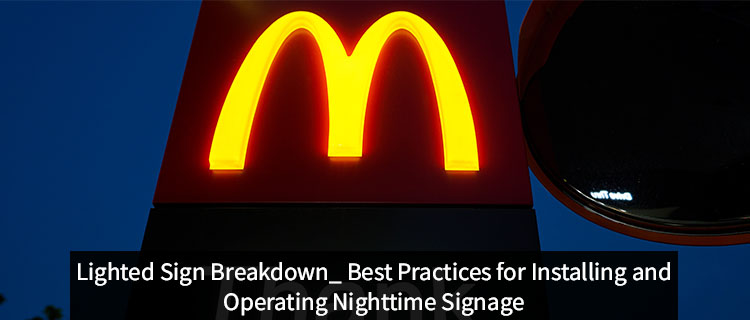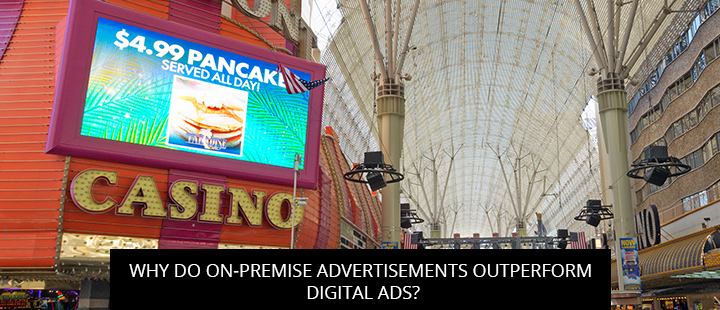Today’s post reviews research by the International Sign Association’s Electronic Message Center (EMC) Resource Center to share some best practices for lighted sign installation, display, and operation.
[sc_fs_faq html=”true” headline=”h2″ img=”” question=”How To Familiarize Yourself With Local Lighted Sign Code” img_alt=”” css_class=”ct-faq”] Before you invest in a big-ticket custom lighted sign, make sure it’s completely compliant with your local sign code. Failing to do so can result in hefty fines or force you to pay for a total redesign. [/sc_fs_faq]
Sign codes regulate most aspects of your lighted sign’s installation, design, and operation, including:
● Allowable surface area calculations
● Illumination and brightness
● Maintenance/upkeep requirements
● Number of signs allowed on the property
● Required setback for property lines
● Message duration and transition, and more
Unfortunately, sign ordinances vary from state-to-state and county-to-county, so we cannot share any universal lighted sign code tips here. But wherever you’re located, Signworld can help–our alliance spans the whole United States.
Take A Walk in Your Customer’s Shoes
Go for a stroll around the block or take a drive past your place of business to make sure your sign is visible and completely legible. Look out for any blindspots or obstructions from different angles, as well as any competitor’s signs that use similar shapes, colors, or messages–your goal is to stand out, not blend in! Make sure your message is easily digestible in the time it takes to pass your display, whether on foot or by car. Perhaps most importantly, look for ambient light from traffic signals, street lamps, and other signs, which could potentially wash out your lighted display.
Limit Sign Brightness to 0.3 Footcandles
Working with the ISA, Dr. Ian Lewin of Lighting Sciences set out to establish some best practices for sign brightness.
During the course of his research and field testing, Dr. Lewin discovered two ideal brightness settings, based on whether the sign was located in an area with high or low ambient light. But further testing revealed that the more conservative recommendation –0.3 footcandles–worked in both low and high-ambient light settings.
In the US lighting industry, foot-candles are a common unit of measurement used to calculate adequate lighting levels of workspaces in buildings or outdoor spaces. It works out to about one lumen per square foot.
Leverage Technology To Maintain Optimal Brightness Throughout the Day
The ideal brightness settings change based on the time of day. Most digital signs and EMCs are designed to produce sufficient brightness for daytime legibility, but these settings are usually not appropriate for night-time viewing.
If your business operates day-and-night, it’s important that you adjust the brightness accordingly to ensure optimal viewing at all hours. Instead of burdening yourself with manual dimming duties, consider automating the chore with any of the following technologies recommended by the ISA:
● Scheduled dimming. “Sunset-sunrise tables allow an EMC to be programmed to dim at the same time that the sun sets and rises,” states ISA research. Talk to your Signworld partner about scheduled dimming options for your chosen sign type.
● Photocell technology. Using a photocell sensor, your signage will automatically dim as ambient light conditions change, requiring no manual adjustment or scheduling.
Free Lighted Sign Consultation – Find a Signworld Partner Near You
Visit the Signworld website to find a lighted sign design specialist near you and get a free quote on your project today.




